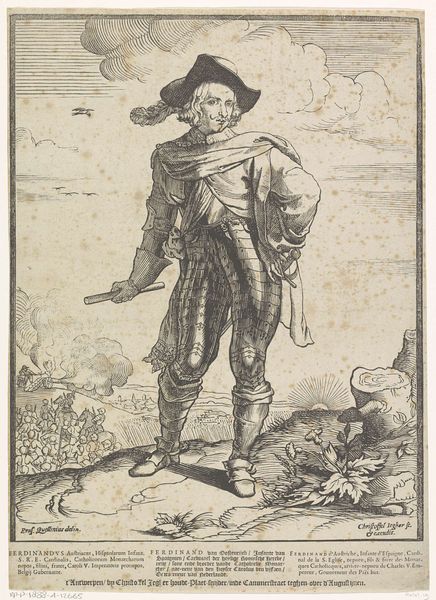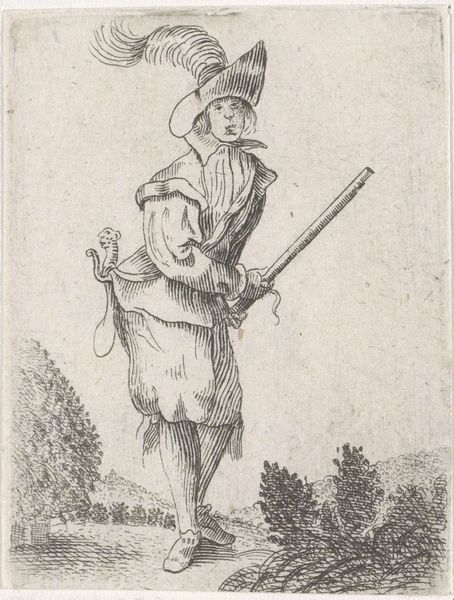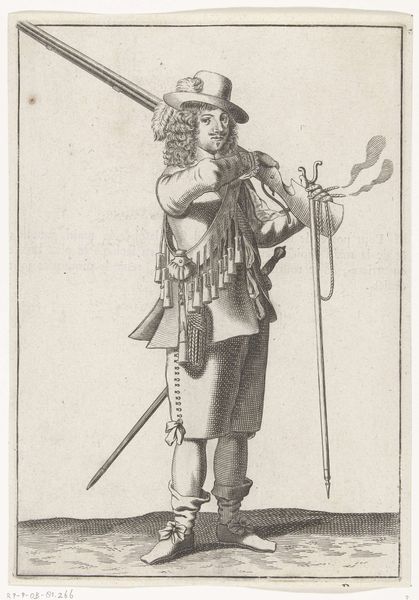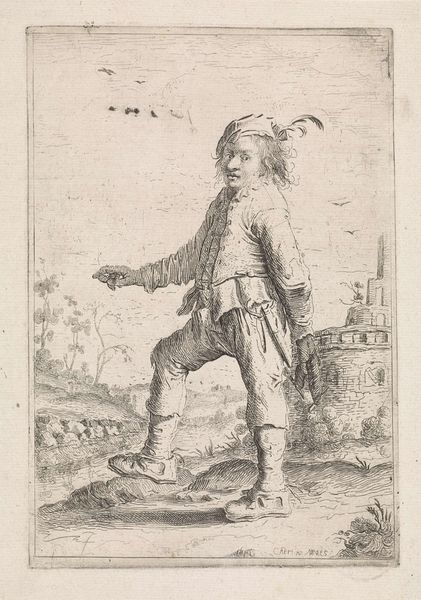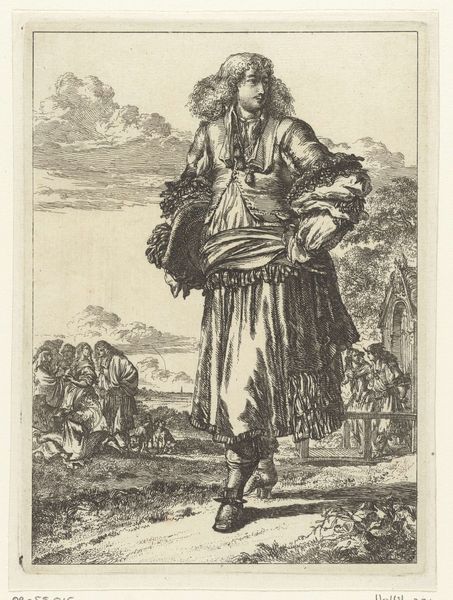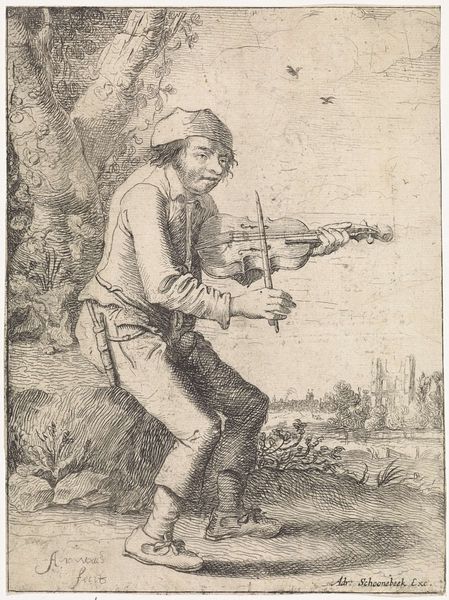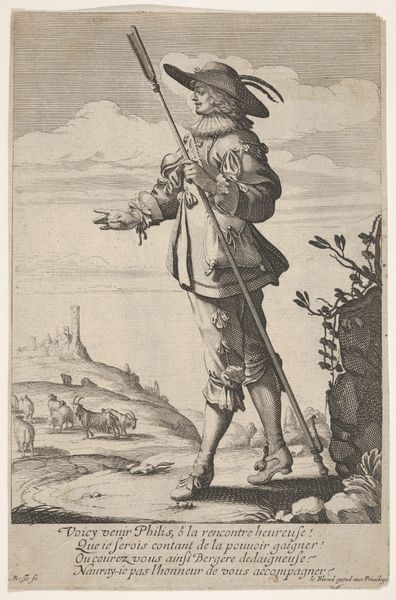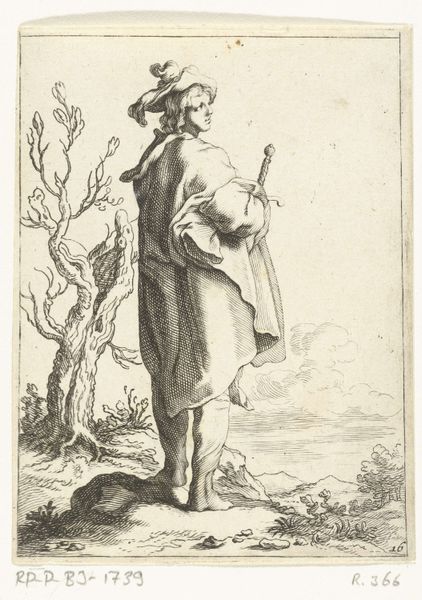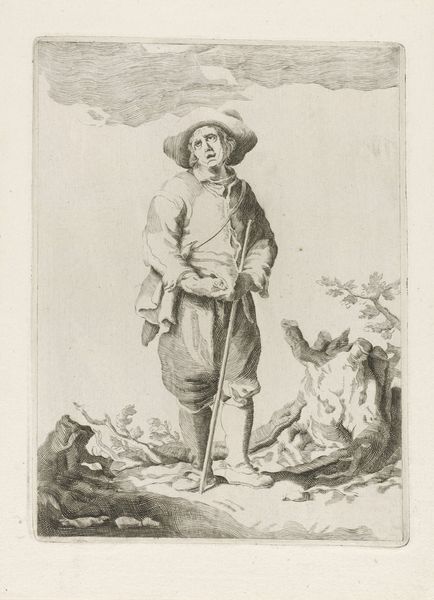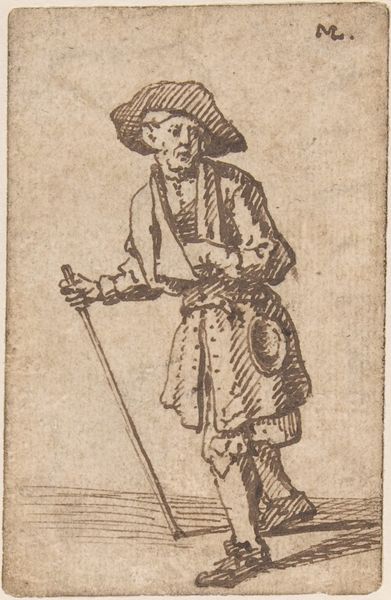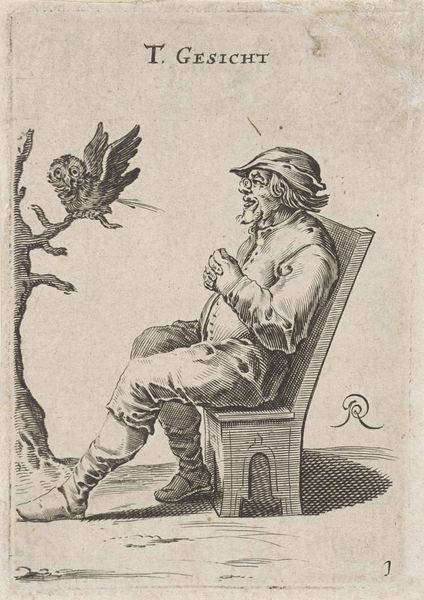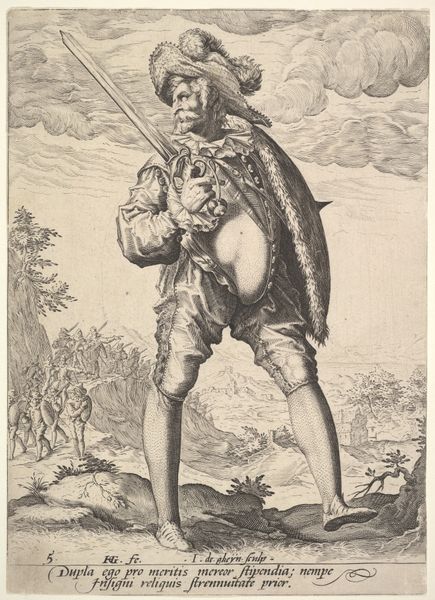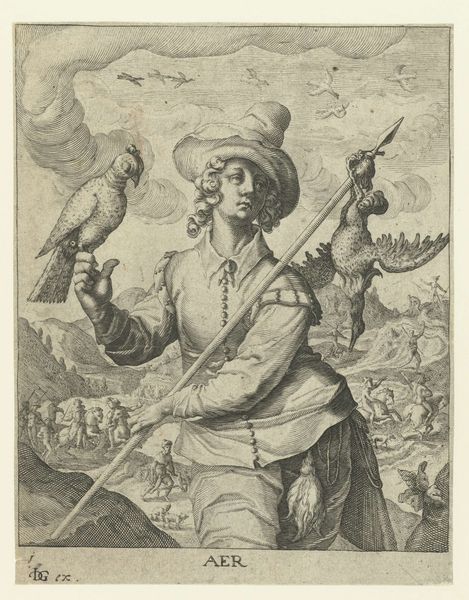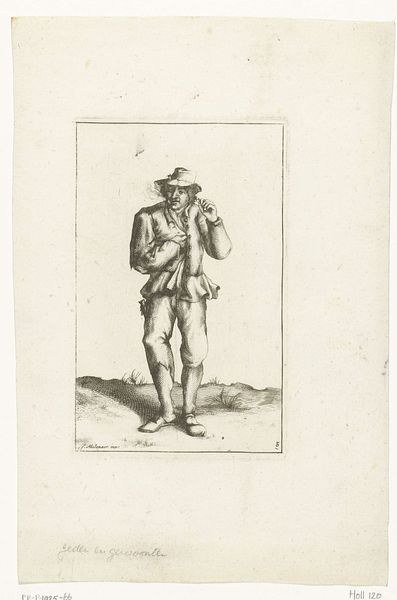
print, engraving
#
portrait
#
dutch-golden-age
# print
#
pen sketch
#
landscape
#
figuration
#
genre-painting
#
engraving
#
realism
Dimensions: height 166 mm, width 104 mm
Copyright: Rijks Museum: Open Domain
Aert van Waes created this etching of a smoking farmer sometime in the mid-17th century, a period when the Dutch Republic was a hub of global trade and burgeoning middle-class culture. The image presents us with a man of the countryside at leisure, puffing away on a pipe as he sits atop what looks like a wicker basket. But, we might ask, why this subject, and why now? The rise of the Dutch Republic brought with it new markets for art, and with those markets came new subjects, such as the lives of ordinary people. This work reflects a broader cultural interest in the lives of peasants, who were often romanticized as simple, honest folk. The etching technique allowed for the relatively inexpensive production of images, making them accessible to a wider audience beyond the elite. To fully understand this work, we can look into the economic and social history of the Dutch Golden Age. Prints and archives from the period can tell us more about the relationship between city and country, and the evolving attitudes toward labor and leisure. The meaning of this artwork will always be contingent on the social and institutional context.
Comments
No comments
Be the first to comment and join the conversation on the ultimate creative platform.
